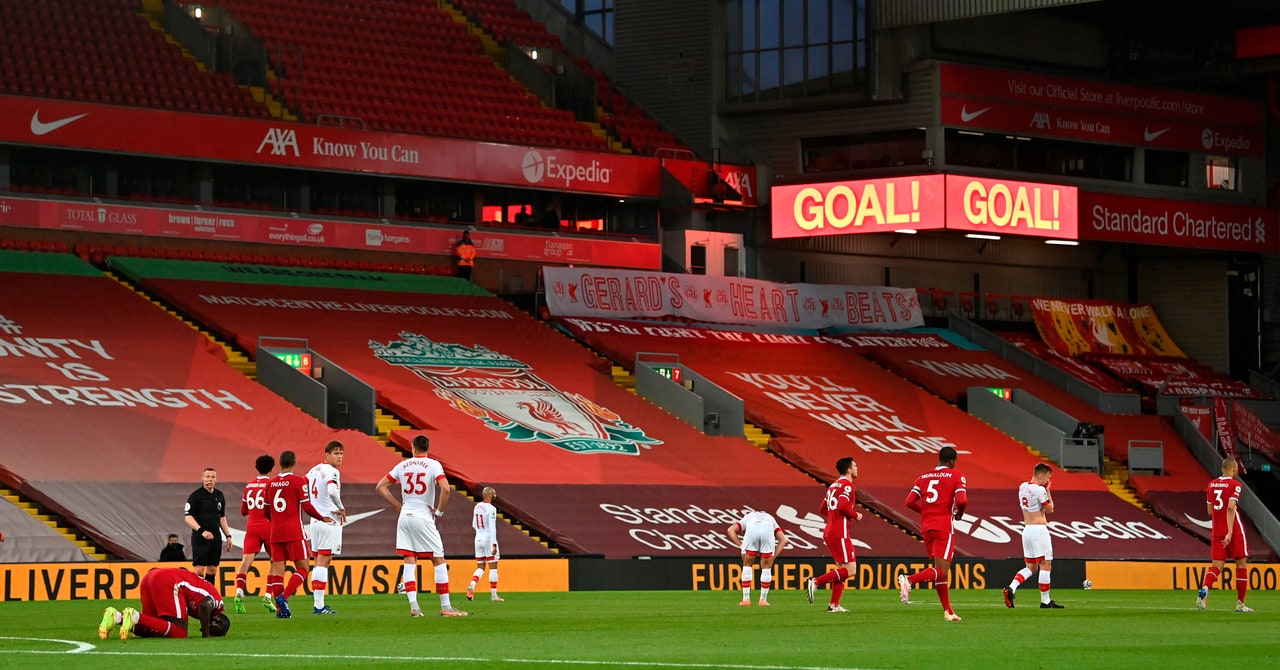DeepMind Wants to Use AI to Transform Soccer

In March 1950, an RAF wing commander and trained accountant named Charles Reep turned his eye for numbers to soccer. Reep, who had become interested in the sport in the 1930s and was fascinated by Herbert Chapman’s pioneering Arsenal team, had returned from the Second World War to find that the tactical revolution he’d witnessed before had stalled.
Finally, at half-time during a drab Division Three game between Swindon Town and Bristol City, during which he watched countless attacks amount to nothing, Reep’s patience ran out. He grabbed a notebook and a pencil and began furiously jotting down what happened on the pitch: He started counting the number of passes and shots in one of the first systematic attempts to use data to analyze soccer.
Seven decades later, the data revolution has reached the grassroots—fans are fluent in xG and net spend, and the top teams pluck statistics PhD students straight from university in the search for an edge. Now, defending Premier League champion Liverpool has joined forces with DeepMind to explore the use of artificial intelligence in the soccer world. A paper by researchers at the two organizations, published today by the Journal of Artificial Intelligence Research, outlines some of the potential applications.
“The timing is just right,” says Karl Tuyls, an AI researcher at DeepMind and one of the lead authors on the paper. DeepMind’s collaboration at Liverpool arose from his previous role at the city’s university. (DeepMind founder Demis Hassabis is also a lifelong Liverpool fan and was an adviser on the research.) The two groups got together to discuss where AI might be able to help soccer players and coaches. Liverpool also provided DeepMind with data on every Premier League game the club played from 2017 through 2019.
In recent years, the amount of data available in soccer has swelled with the use of sensors, GPS trackers, and computer vision algorithms to track the movement of both players and the ball. For soccer teams, AI offers a way to spot patterns that coaches can’t; for DeepMind researchers, soccer offers a constrained but challenging environment for them to road test their algorithms. “A game like [soccer] is super interesting, because there are a lot of agents present, there’s competition and collaborative aspects,” says Tuyls. Unlike chess, or Go, soccer has inherent uncertainty built into it, because it’s played in the real world.
That doesn’t mean you can’t make predictions, though—and that’s one area where AI could prove particularly useful. The paper demonstrates how you can train a model on data about a specific team and lineup to predict how its players will react in a particular situation: If you knock a long ball into the right-hand channel against Manchester City, for example, Kyle Walker will run in a particular direction, while John Stones may do something else.
This is known as “ghosting”—because the alternative trajectories are overlaid on what actually happened, like in a video game—and has a range of different applications. It could be used, for example, to predict the implications of a tactical change or how an opponent might play if a key player goes off injured. These are things that coaches would likely notice themselves, and Tuyls stresses that the aim isn’t to design tools to replace them. “There’s lots of data, lots to digest, and it’s not necessarily so easy to handle these masses of data,” he says. “We’re trying to build assistive technology.”
As part of the paper, the researchers also conducted analysis on more than 12,000 penalty kicks taken across Europe in the last few seasons—categorizing players into clusters based on their style of play, and then using that information to make predictions about where they were most likely to hit a penalty and whether they were likely to score. Strikers were, for instance, more likely to aim for the bottom-left corner than midfielders—who took a more balanced approach, and the data demonstrated that the optimal strategy for penalty takers was, perhaps unsurprisingly, to kick to their strongest side.
